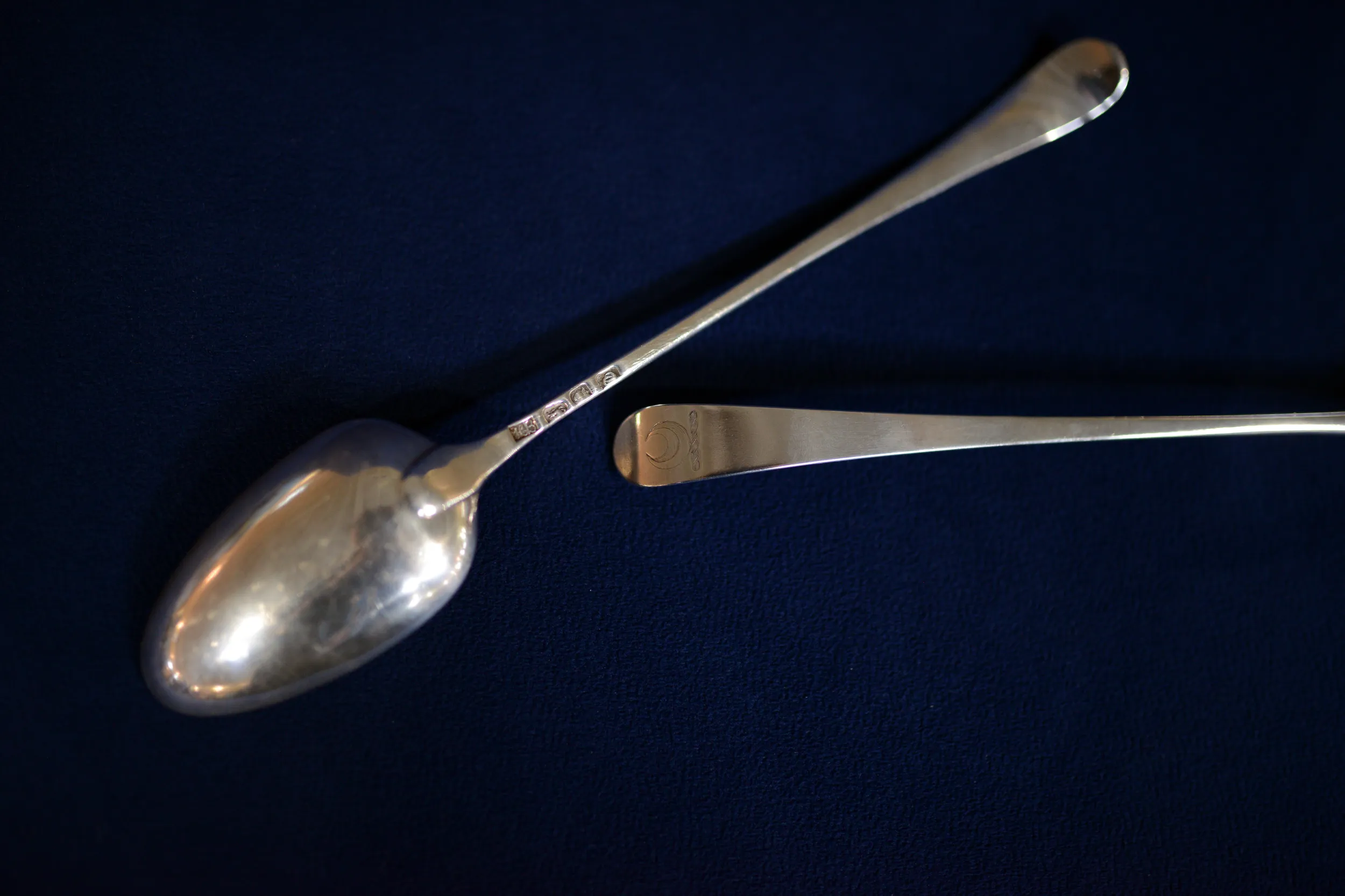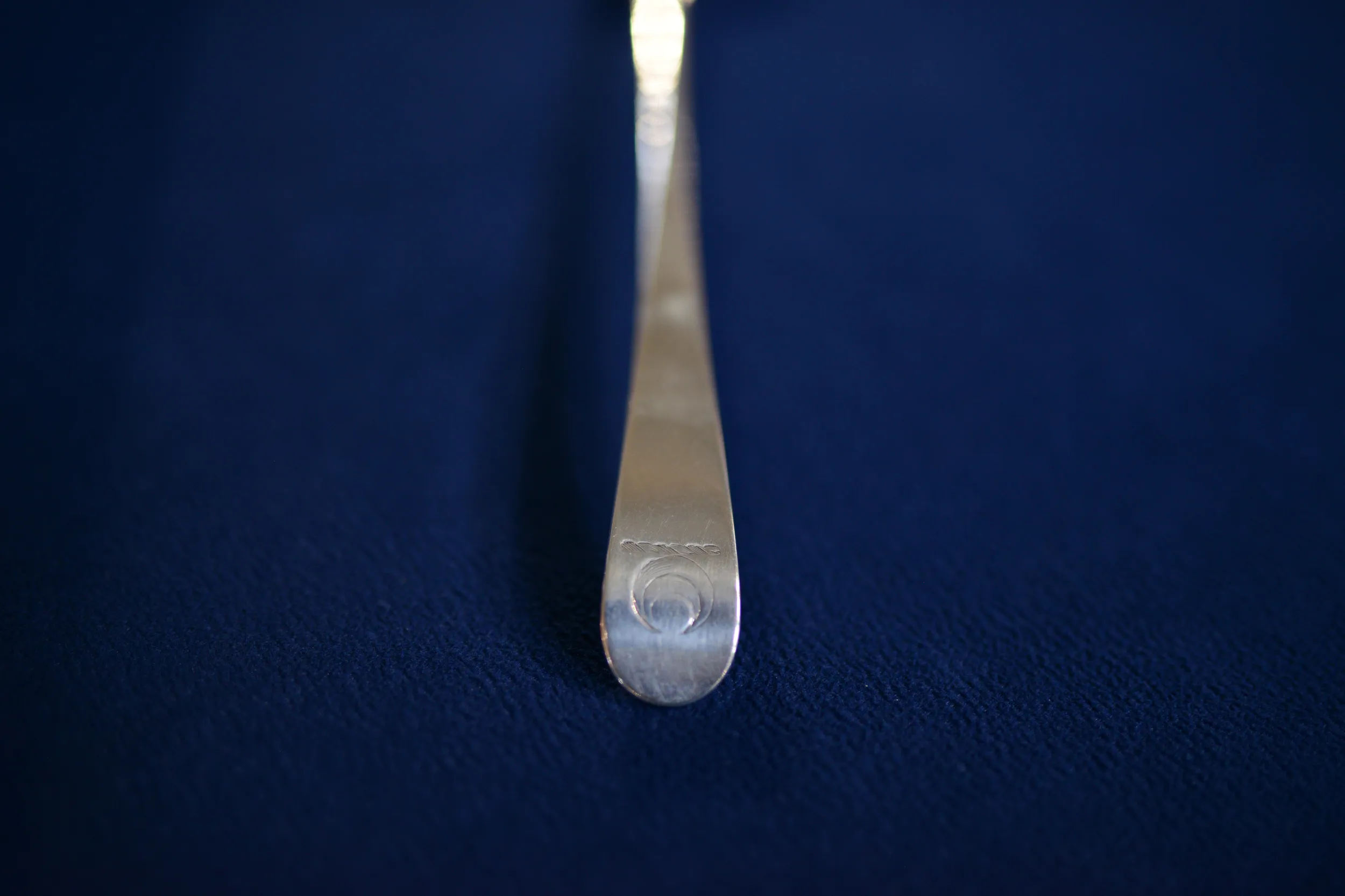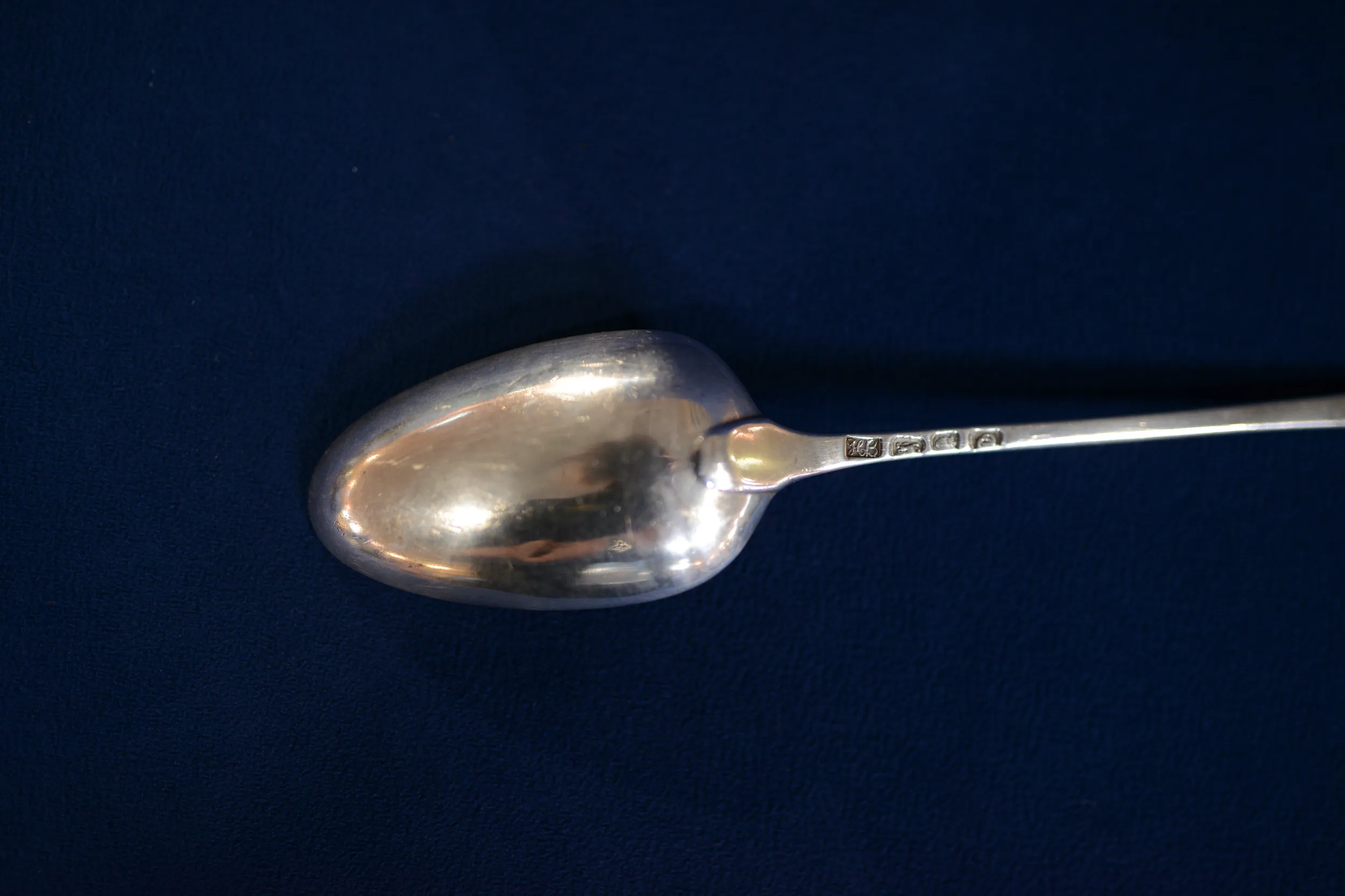GUEST: These spoons belonged to my ancestor John Rutledge. John Rutledge was the governor of South Carolina during the Revolutionary War. He was one of the authors of the Constitution and a signer of the Constitution, and he was on the Supreme Court.
APPRAISER: Okay, and what else do you know about the spoons? They've just been passed in the family for all the generations?
GUEST: Yes, they've always been in the family. They were just recently given to me by a distant cousin.
APPRAISER: The spoons, interestingly enough, are English. They were made by the preeminent family of English silversmiths, the Batemans. The spoons have the mark of Hester Bateman, who's the matriarch of the family. So she was the most famous silversmith in the 18th century as a woman in England. The nice thing about English silver is you can generally tell what year it was made. There's a variety of marks on each piece of silver. One of them is the year mark. The year mark is a letter. There generally also then is the maker's mark, there's the mark showing that it's sterling silver, and there's the crown mark. When I look at this piece, I can then determine it was made in the year 1774. American silver was exceptionally rare, especially in the South, so English silver predominantly was in most of the nice households. Right up here is a marking, and tell me what that marking is.
GUEST: That is the crest of John Rutledge.
APPRAISER: So both pieces have the Rutledge crest on the top. What's interesting is you've got a pair that have survived now for 250 years. There does not appear to be any horrific wear on them. A lot of times, the spoons are worn in the front. The condition is magnificent, they're sterling silver, and in the market today, a pair like this in a retail setting, especially in South Carolina, would probably sell somewhere in the $6,000 to $7,000 price range. You should be very proud to have kept them in the family for all these years.
GUEST: Oh, I am, I am.














